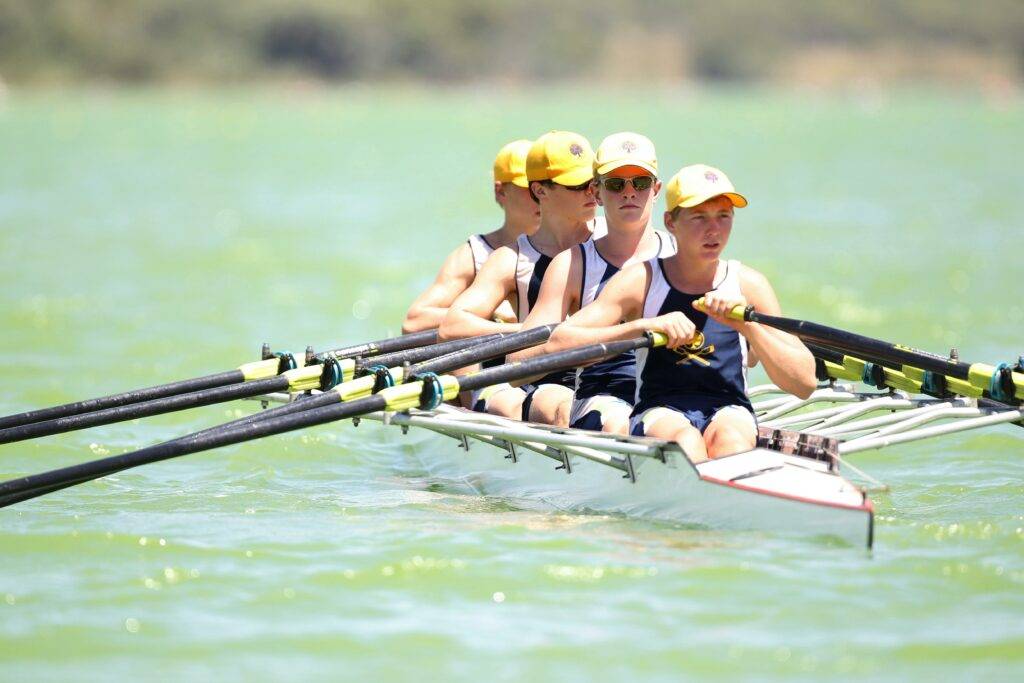Men's rowing
Scholarship Facts
Men’s College Rowing Scholarships: What You Need to Know
For many athletes going through the rowing recruiting process, earning a rowing scholarship is the ultimate goal. However, athletic scholarships in men’s rowing are rare and typically reserved for top-tier athletes at select colleges. Most schools don’t offer rowing scholarships due to their division level or league. In this section, we explain rowing scholarship requirements and answer common questions about securing men’s college rowing scholarships.
Are There Men’s Rowing Scholarships?
Yes, there are men’s rowing scholarships available, but they are difficult to earn. Many men’s rowing teams are part of NCAA D3 or Ivy League schools, which do not offer athletic scholarships. Many other teams operate on tight budgets, as rowing is an expensive sport, and these schools may focus on securing admission to top academic programs rather than offering financial aid specifically tied to athletics.
However, teams often work with athletes and their families to secure need-based financial aid or academic scholarships. Even without athletic scholarship money, a financial aid package from a college may cover similar costs.
How Many Men’s Rowing Scholarships Are There?
The number of men’s rowing scholarships is limited. Most men’s rowing teams are part of NCAA D3 or Ivy League institutions, which do not offer athletic scholarships. However, schools such as University of California-Berkeley, Northeastern University, Boston University, University of Washington, and Stanford University offer rowing scholarships. These programs have high athletic standards, so securing a scholarship can be very competitive.
Coaches at some colleges may also help rowers secure academic scholarships or need-based aid. While rowing is not often a path to significant athletic scholarship dollars, it can help athletes gain access to top academic institutions.
Rowing Scholarship Erg Times for Men’s Rowing
There is no set 2k erg time that guarantees an athletic scholarship. However, to be considered for a rowing scholarship, athletes generally need to be in the 6:40s or better. That said, athletic scholarships are rare for non-elite rowers. Ivy League and NCAA D3 schools do not offer athletic scholarships, but they can help secure other types of aid.
Finding Colleges That Offer Rowing Scholarships
To find colleges offering rowing scholarships, athletes need to be proactive and reach out to coaches. Scholarship availability can fluctuate based on team budgets, and coaches decide how to allocate their resources. Here’s a breakdown of where rowing scholarships are found:
- Division 1: Most athletic scholarships are found here (excluding Ivy League schools).
- Division 2: A small number of programs offer athletic scholarships, but they are limited.
- Division 3: No athletic scholarships, but academic and need-based aid are available.
- NAIA: Some scholarships, but only a couple of programs compete at this level.
- Club: No athletic scholarships, and rowers must cover club fees themselves.
How to Get a Rowing Scholarship
To earn a rowing scholarship, athletes must demonstrate a combination of strong athletic ability, excellent academic performance, and diligence in the recruiting process. Here’s what it takes:
- Top-notch grades and test scores: Coaches prioritize athletes who excel academically.
- Strong 2k erg times: Meeting the erg standards for top programs (usually in the 6:40s or better) is crucial.
- Proactive outreach: Athletes must actively contact college coaches to find out which programs have scholarships available.
- Open-mindedness: Some of the best high school rowers enroll at schools like Yale and Harvard, which do not offer athletic scholarships. Flexibility in school choices can help maximize financial aid opportunities.
Coxswain Scholarships
Coxswain scholarships are extremely rare due to the limited number of roster spots available for coxswains. While not impossible, coxswains should set realistic expectations about their chances of securing an athletic scholarship.
How to Get Recruited for College Rowing
Men’s rowing teams are often located at colleges with high academic standards, so recruits must fit both athletically and academically. Prospective rowers should focus on improving their 2k times, developing strong rowing skills, and staying on top of their grades. Being proactive in contacting coaches and staying informed about the recruiting timeline is also essential for success.
When Does the Rowing Recruiting Process Start?
The rowing recruiting process typically starts early in high school. Officially, NCAA D1 coaches can start communicating with athletes on June 15 after sophomore year. Athletes should prepare by researching schools, building a target list of colleges, attending rowing camps, creating a highlight video, and maintaining strong academic performance. Once recruiting communication is allowed, athletes must actively reach out to coaches to pursue scholarship opportunities.
Securing a rowing scholarship requires dedication, strong academic and athletic performance, and a clear understanding of the recruiting process.
Quick Links

- Men's Rowing Recruiting
- Men's Rowing Scholarship Facts
- How To Get Recruited in Men's Rowing
- Recruiting Youth Sports
- Verified Coach List
- Pipeline Mentor List
